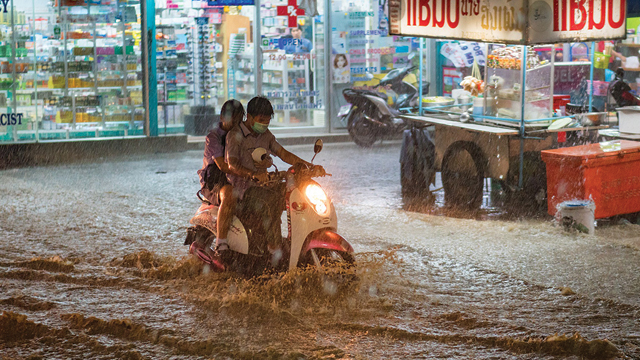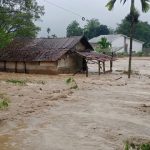Jakarta (Greeners) – Indonesia’s Meteorology, Climatology and Geophysics Agency (BMKG) shows that recent heavy rains, which led to puddles, floods and landslides, are also affected by climate change.
“For the past last days, it shows activities of cool air mass from Asia (Asian winter monsoon) which significantly affecting rainfall increases in Indonesia. In addition, it is predicted that there will wet air mass flowing from western part of Indian Ocean to western part of Indonesia known as Madden Julian Oscillation, for next week,” said Mulyono R. Prabowo, deputy of Meteorology at the agency, on Monday (10/12/2018).
READ ALSO: BMKG and Health Agency To Release Dengue Fever Early Warning System for Jakarta
Prabowo said that the interaction between the two phenomena added with high activity of tropical disturbance, such as wind circulation and intersection can cause and increase the potential of heavy rains with thunderstorms, especially in Sumatra and Java areas.
“The condition can cause heavy rains with thunderstorms and strong winds in several areas in Indonesia for next week, between December 10-16, including Aceh, North Sumatra, West Sumatra, Riau, Jambi, Bengkulu, South Sumatra, Lampung, Banten, DKI Jakarta, West Java, Central Java, Yogyakarta and East Java,” said Prabowo.
He added Bali, West Kalimantan and Central Kalimantan, and Maluku will also experience heavy rains during this period.
READ ALSO: East Kalimantan Prepares To Tackle Climate Change
Furthermore, the agency reported that a potential of high tide, between 2.5 to four meters, will happen in northern areas of Natuna Islands, western areas of Simeulue Islands to Mentawai, Bengkulu – Enggano areas, western coastal areas of Lampung, Indian Ocean south of Java to Lombok.
Prabowo warned people on the impacts of the bad weather, such as floods, landslides, flash floods, puddles, strong winds, felled trees and slippery roads.
Climate Change Affects Rainfall
Kadarsah, chief of climate change analysis at BMKG, said that severe climate change is contributing to heavy rains.
“Climate change, one of the indications, is the increase of extreme weather, such as temperature and extreme rainfall. Extreme rainfall is potentially leads to disasters, such as floods, hurricanes, among others,” he said to Greeners on Tuesday (11/12/2018).
Furthermore, he said that climate change indication on rainfall can be measured based on the rainfall for the past 30 years in different locations.
Based on climate data in November in Tasikmalaya, accumulated rainfall reached the highest with 1,325 millimeter in one month in Karang Nunggal. The highest wind speed was 43 kilometers per hour in Aceh, the lowest humidity was 41.8 percent in Jatiwangi of West Java, meanwhile the longest dry days were 149 days recorded in Bendungan Kelara of South Sulawesi.
“In conclusion, the average quantities of each region are not the same because each region in Indonesia has different weather. But, it can be concluded that recent rainfall, its intensity and accumulation, is affected by climate change,” he said.
Reports by Dewi Purningsih



















































